Growing tomatoes can be tricky and slow, but it doesn’t have to be that way. It can be really easy to learn how to make your tomato plants grow faster than ever before with just a few simple steps.
Let’s explore how to accelerate your tomatoes’ growing process so you can enjoy vine-ripened fruits long before anyone else in your neighborhood. Let’s learn how to start tomato seeds early, bury seedlings at the proper depth, and fertilize with compost tea, fish emulsion, and worm castings, creating the best tomato plants this year.
How To Make Tomato Plants Grow Faster
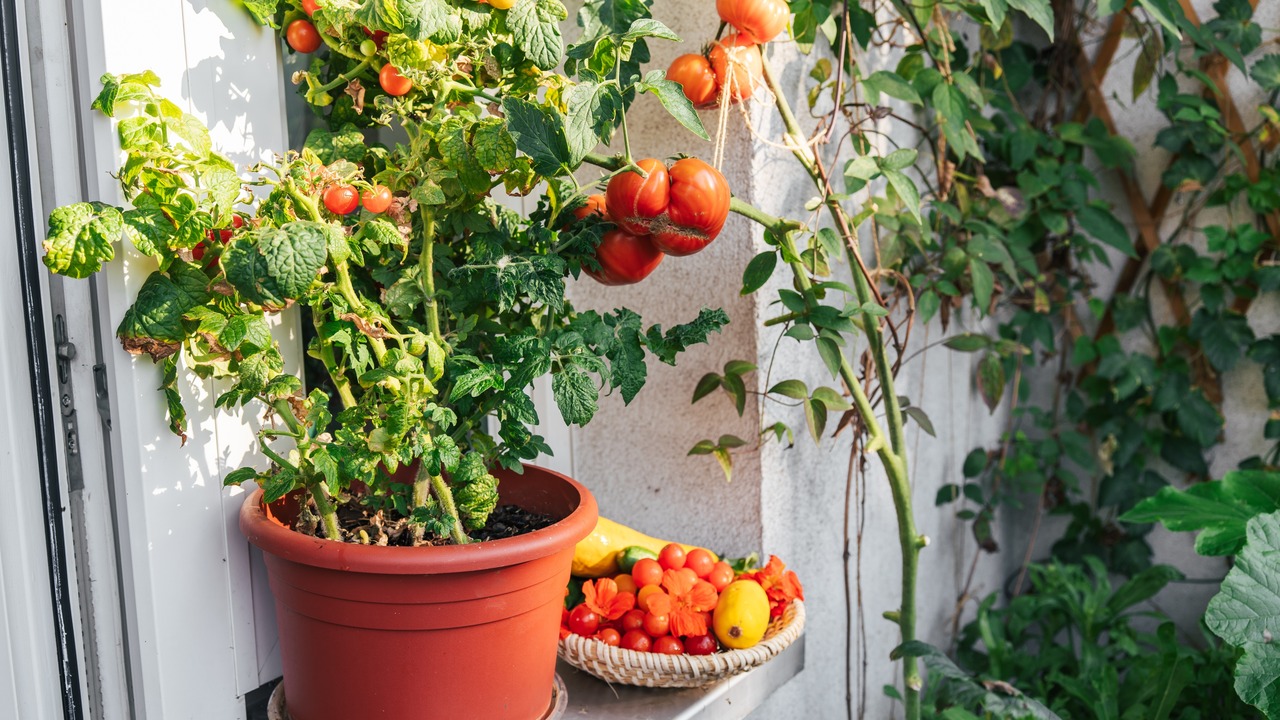
Image Credit: Shutterstock.
We have been planting tomatoes for a while now and have figured out the best ways to produce the best tomatoes. From prepping your garden to giving your tomatos the right amount of care, we have some expert tips on how to cultivate the best tomato crops this year.
1. Select an Early Maturing Variety
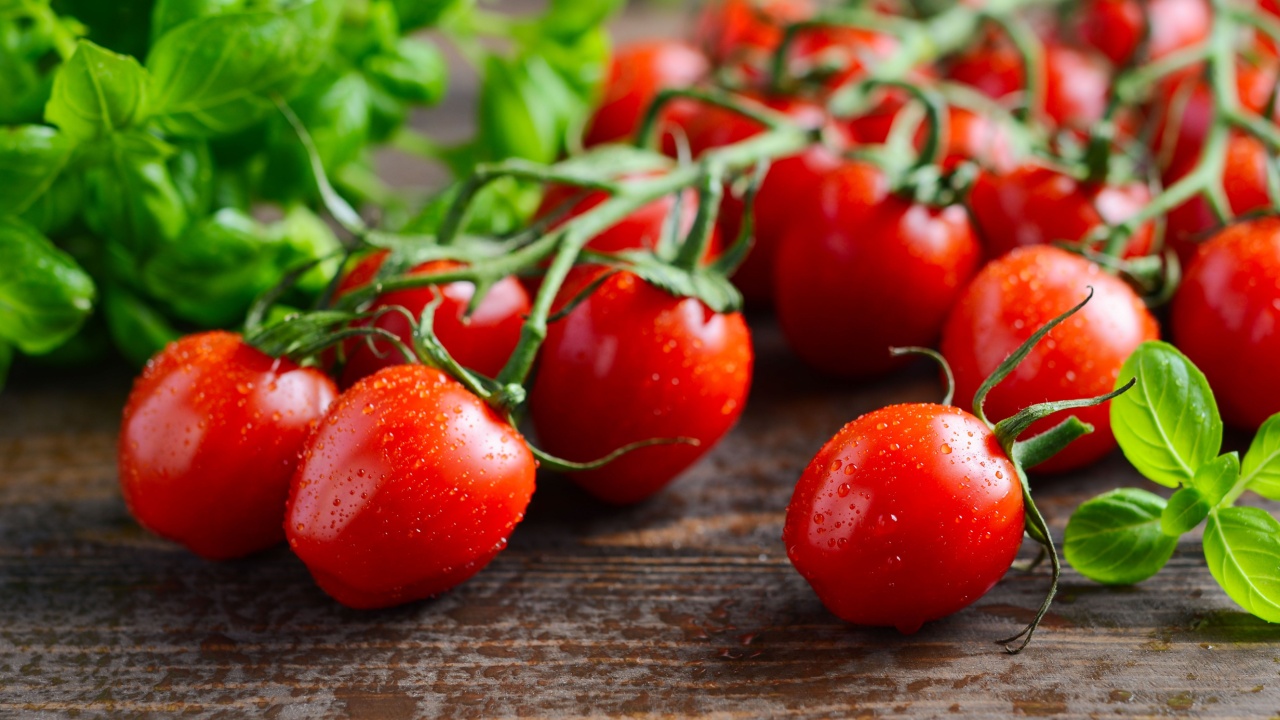
Image Credit: Shutterstock.
Look for varieties of tomatoes that mature in a short time. Some varieties are ready to harvest in as little as 40 days. That’s fast! Usually, these will be determinate plants.
Early-maturing tomato varieties are best if you want a quick harvest. Look for tomato varieties that mature in 60-75 days or less – these usually produce fruits faster than other types. Many heirloom tomatoes are also considered early maturing. Read the seed packet label closely to determine the days until harvest before selecting.
2. Start Seeds Indoors 6 to 8 Weeks Before the Last Frost Date
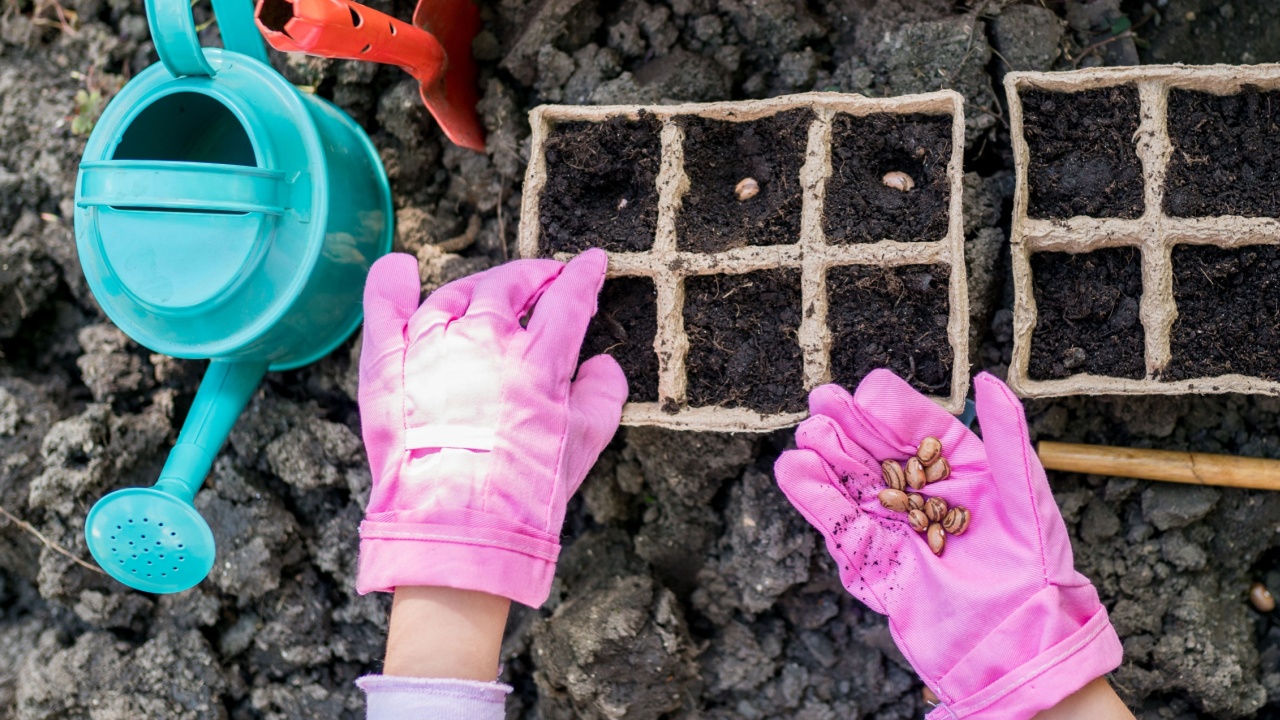
Image Credit: Shutterstock.
Start your tomato seeds early so you can reap the rewards sooner! Use modern tools like LED grow lights to give them a head start and get those juicy fruits faster.
Suppose you live in an area with mild winters; plant as soon as February or March. If you have high temperatures during the growing season, consider starting a month earlier than usual. Timing is key! Planting too early can put your plants at risk of frost damage while planting too late can stunt their growth.
3. Prepare the Soil

Image Credit: Shutterstock.
Tomatoes love heat! The soil in the garden beds needs to be warm enough for them to grow. If you can, warm the soil before transplanting your tomato seedlings; this can significantly help their growth and development.
To properly prepare the soil, you must first test its pH levels. An ideal soil pH range for tomatoes is 6.2 to 6.8, so if necessary, add lime or sulfur to adjust the soil’s acidity accordingly.
After adjusting the pH level, mix organic matter, such as compost and mulch, into the existing garden soil to improve aeration and drainage while providing essential nutrients to your tomato plants throughout their growing season.
When transplanting, place each seedling deep into the prepared soil where roots can easily access more water and nutrients.
Finally, lay a layer of organic mulch around each seedling for further protection from extreme temperatures and weeds that could out-compete them for resources.
4. Give Tomato Plants Enough Space
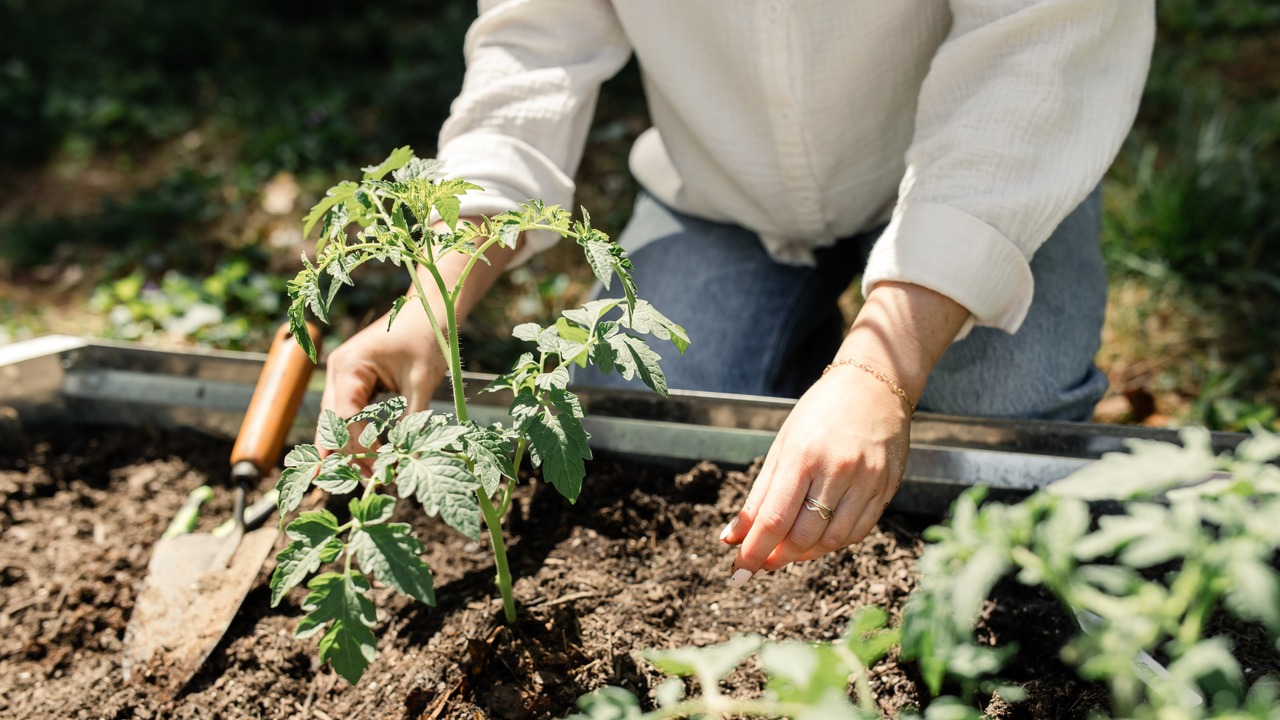
Image Credit: Shutterstock.
When planting tomatoes, consider the expected mature tomato size and space plants correctly for optimal growth and flavor.
Depending on the variety, space tomato plants 18-36 inches apart to give them room to grow freely. Planting tomatoes too close to each other can hinder their growth, encourage disease, and even loose some of their flavor.
5. Planting Depth Is Important
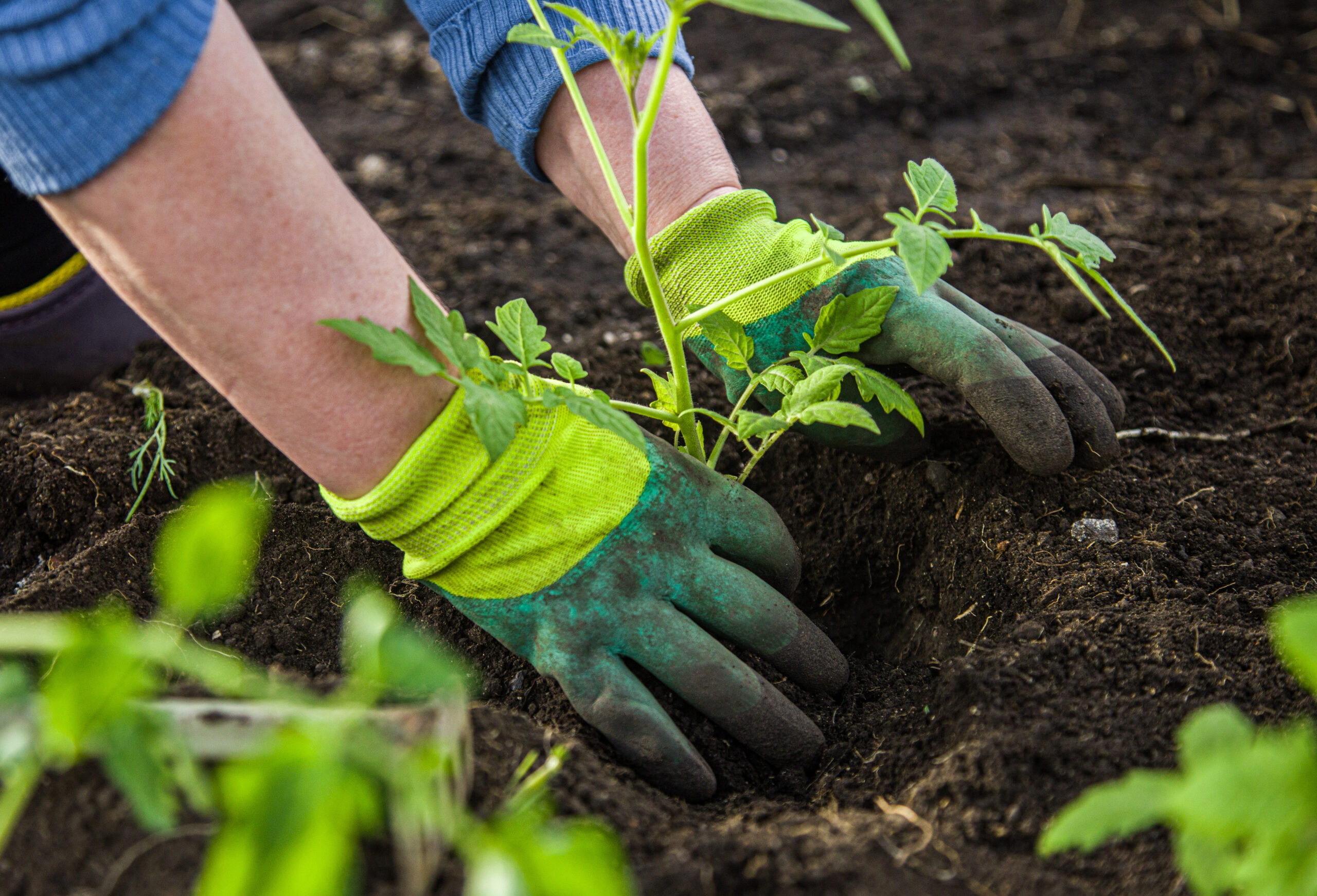
Image Credit: Shutterstock.
Properly burying your seedlings is really important for optimal growth and development.
Dig a hole that is deep and wide enough so that the roots of the tomato plant can spread out without being constricted. A good rule of thumb is to dig a planting hole twice as deep as the root system of your seedling. This will give them plenty of room to grow and develop robust root systems, which will help them become more drought-tolerant and better able to withstand windy conditions.
6. Protect Tomato Plants
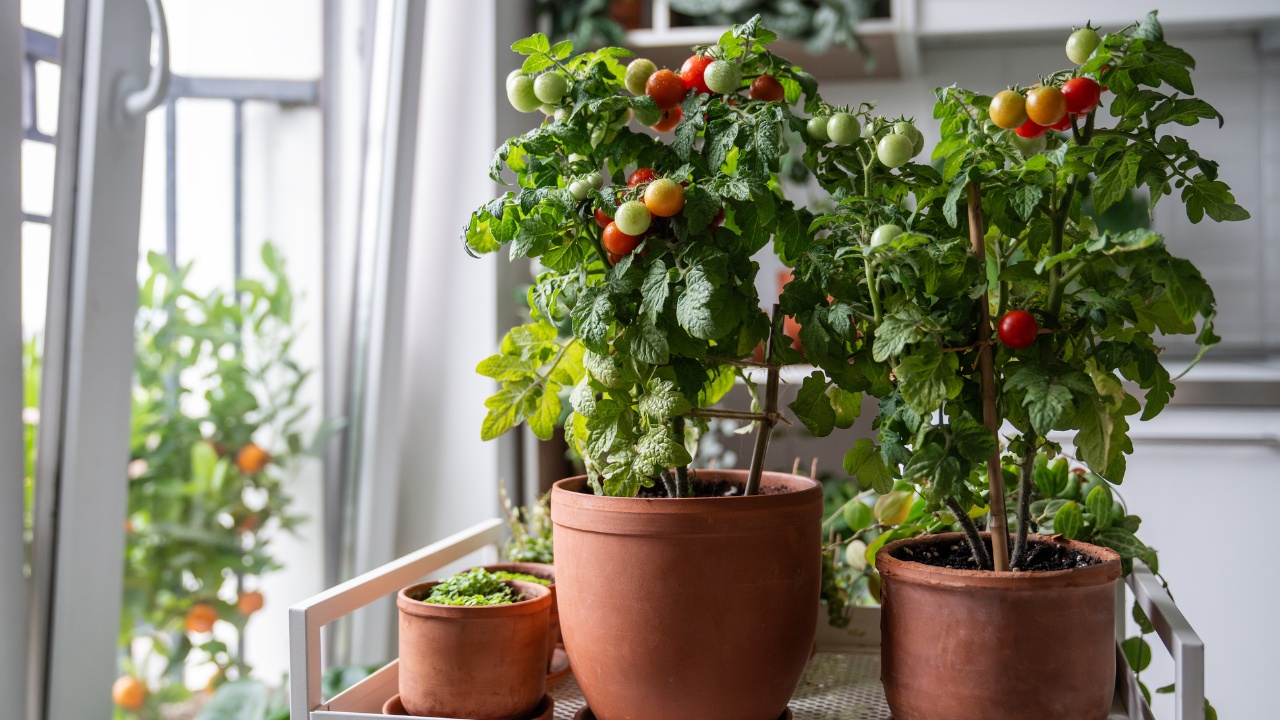
Image Credit: Shutterstock.
Protecting tomatoes from pests and harsh weather is key to a successful harvest season. For instance, a greenhouse or mini tunnel can help ensure the plants receive sunlight while protecting them from strong winds and heavy rains.
Another way to protect your tomato plants is by using row covers. Row covers are protective fabric barriers that keep out destructive insects like worms, beetles, and caterpillars. Additionally, a row cover will help retain warmth around the tomato plants during cold nights and reduce water loss when it’s hot outside.
You can further protect your tomato plants by incorporating worm castings as fertilizer into the soil. Worm castings are full of beneficial bacteria that will provide essential nutrients for the healthy growth of your tomato plant, while also acting as an organic pest deterrent!
7. Stake, Cage, or Trellis Tomato Plants
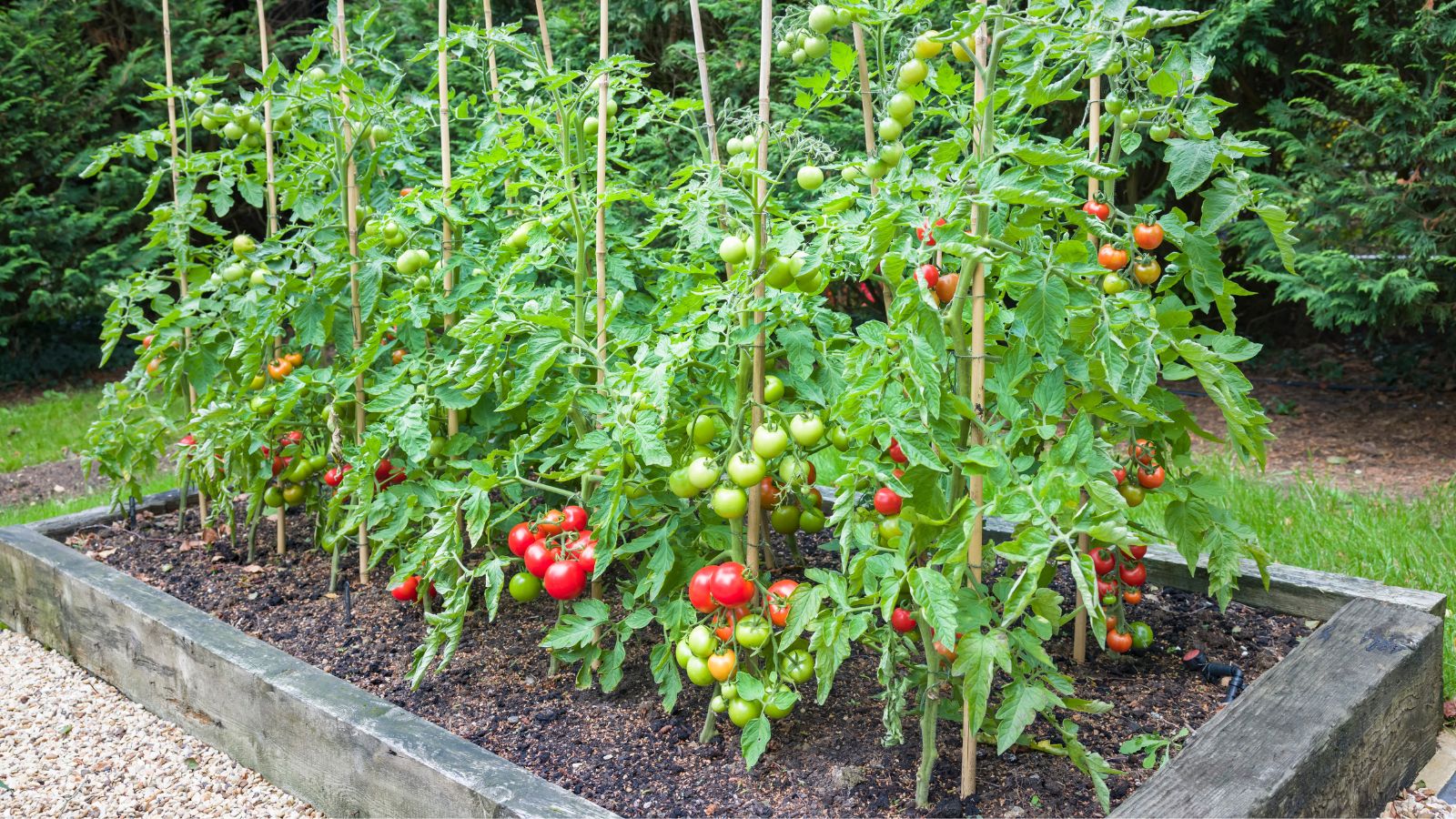
Image Credit: Deposit Photos.
Stake or trellis your tomato plants to help them reach their full potential! It’s essential to support your tomato plants to grow quickly.
Staking and trellising are two methods that gardeners use to ensure tomatoes get the best growing conditions. Staking involves placing a stake in the ground next to each plant and then tying the stem securely to the stake.
Trellising requires setting up a structure that holds the tomato plants off the ground, allowing for better air circulation and easier access for harvesting. Both methods will help keep your plants upright and prevent them from becoming tangled or weighed down by heavy fruit.
With proper staking or trellising, you can expect faster growth rates and bigger yields from your tomato plants!
8. Add Mulch To Retain Water and Keep Weeds at Bay
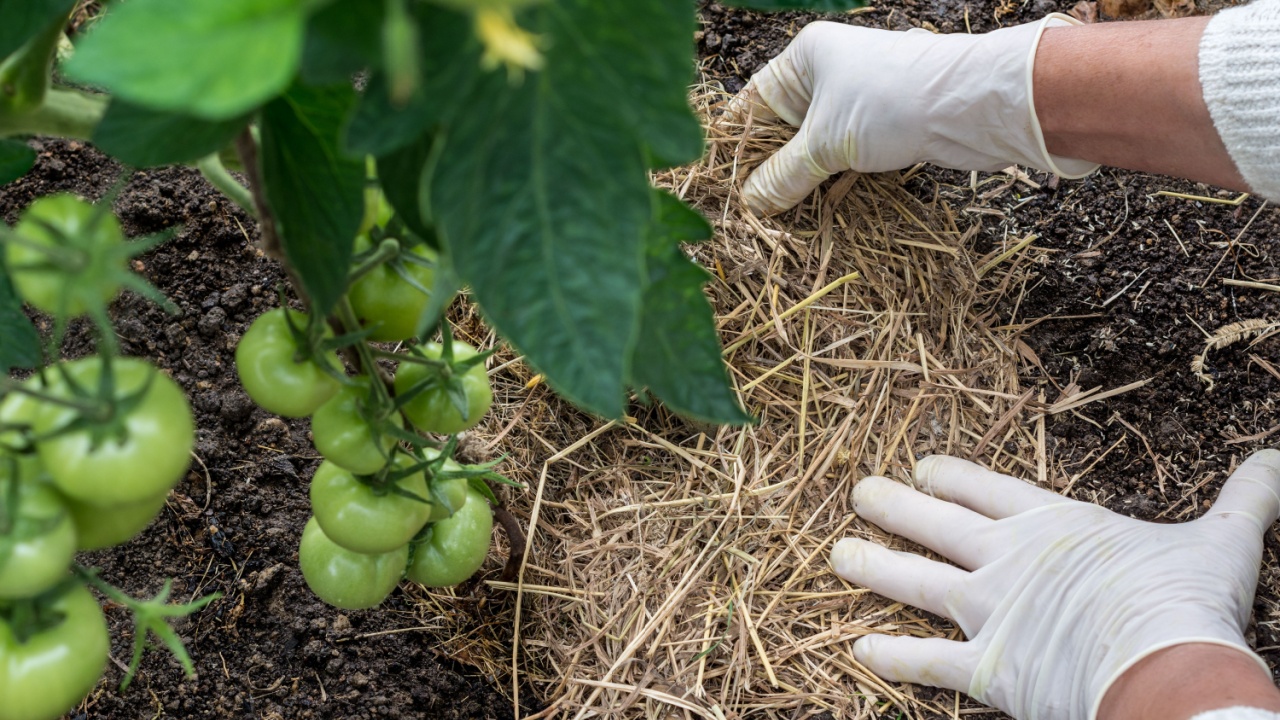
Image Credit: Shutterstock.
Mulching around the plants with straw or organic grass clippings to prevent weeds from growing and maintain soil moisture.
It also adds organic matter to the soil, increasing its nutrients and improving drainage.
9. Feed Tomatoes With an Organic Fertilizer

Image Credit: Shutterstock.
Fertilizing your tomato plants with compost tea or other natural sources can give them a vitamin boost, helping them become strong and healthy for a bigger and better harvest.
Compost tea is an excellent way to fertilize tomato plants naturally: it helps break down nutrients in the soil, making them more readily available for your tomato plants to absorb, resulting in faster growth.
To make compost tea, mix a few shovels of finished compost into a large bucket of water and let it steep for 24 hours before applying it directly to the tomato plants’ roots.
Two of the most common fertilizers for tomatoes are fish emulsion and Epsom salt.
Fish emulsion adds nitrogen to the soil, creating lush foliage and promoting root growth. On the other hand, Epsom salt is made up of magnesium sulfate crystals, which help tomatoes produce more fruit by increasing their photosynthesis rate.
Do not to over-fertilize, as this can burn your plants. Instead, use these fertilizers in moderation: once every three to four weeks is usually enough for the best results.
10. Water Regularly
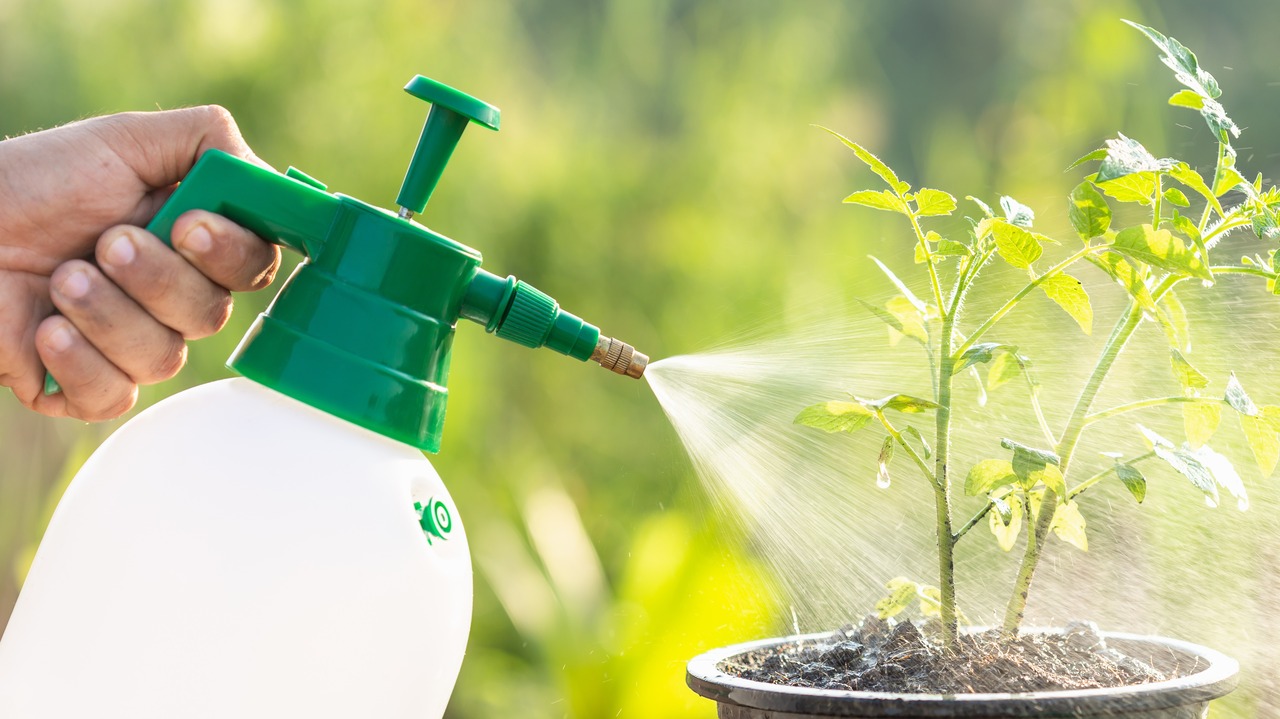
Image Credit: Shutterstock.
Watering your tomato plants regularly and deeply is critical to keeping them healthy, especially during the hot summer. To ensure that your tomatoes get the optimal amount of water, use a soaker hose to deliver 1-2 inches of water per week.
A soaker hose will provide consistent and even watering that will penetrate deep into the soil instead of just wetting the surface. This means your tomato plants get a slow, steady moisture supply without risk of over or under watering.
Of course, if you added some mulch to the base of your tomato plants, it will help retain moisture in the soil and prevent quick evaporation.
11. Control Tomato Pests
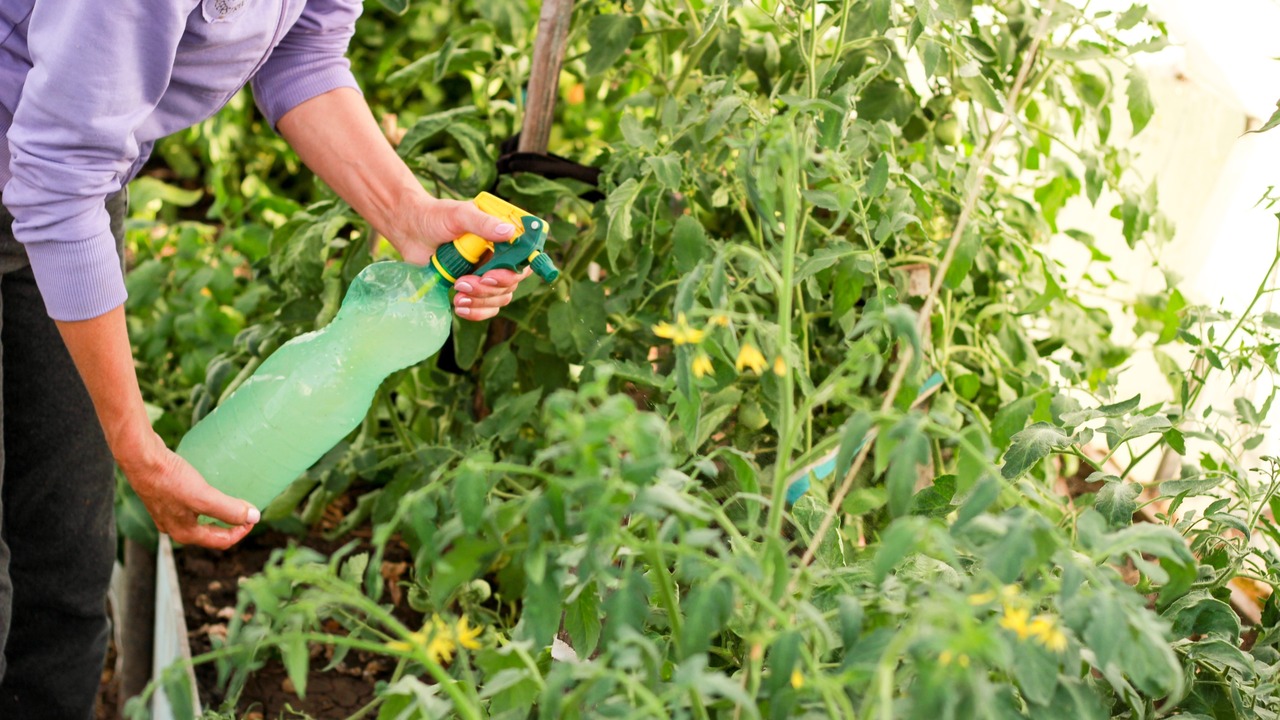
Image Credit: Shutterstock.
Tomato hornworms are a common pest in many gardens and can wreak havoc on tomato plants.
One way to prevent tomato hornworms is through the use of companion planting. Planting basil, oregano, thyme, garlic, or marigolds near your tomatoes will help repel many pests. You can also introduce beneficial insects, such as ladybugs or lacewings, into your garden, which feed on aphids and other pests.
Creating barriers around the base of your plant using plastic collars or mesh covers will also help keep out any unwanted visitors.
Lastly, you should inspect your tomato plants regularly for signs of infestation and pick off any worms immediately – this is usually an effective method for keeping them away from your crops!
12. Timely Harvesting is Important
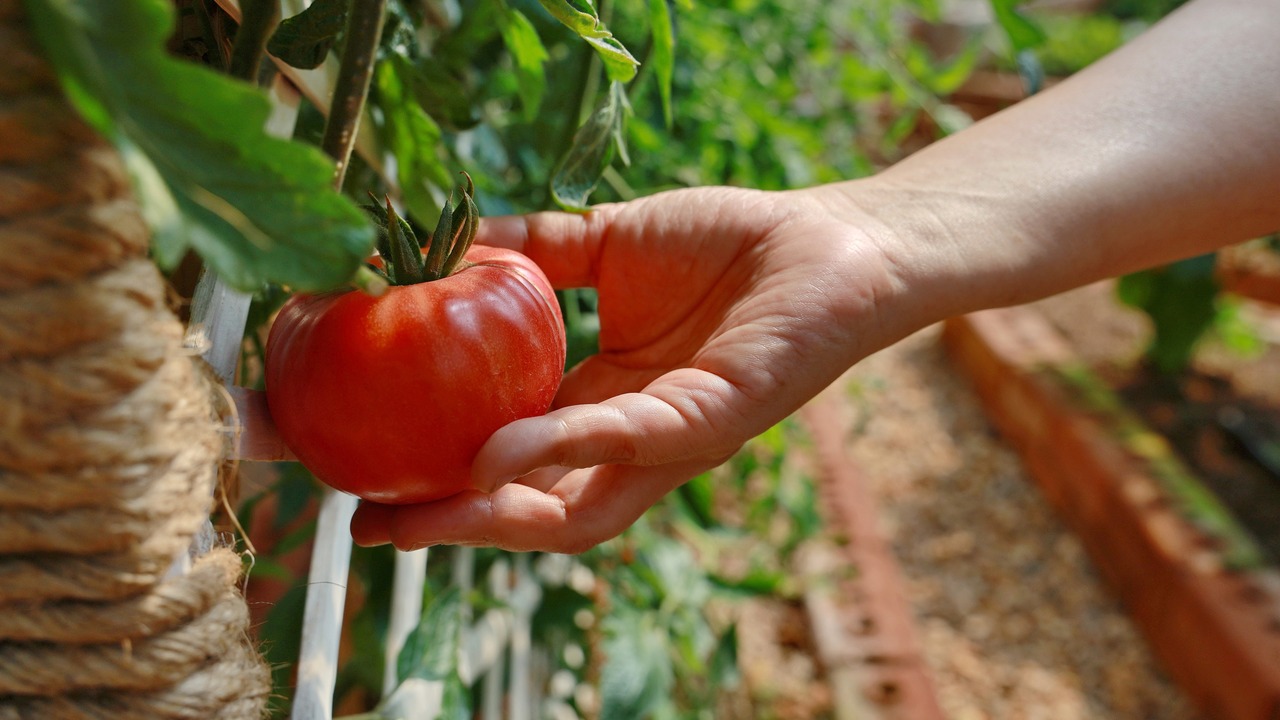
Image Credit: Shutterstock.
I don’t know about you, but I’m usually very eager to harvest that first tomato. Remember that tomatoes ripen fastest and best right on the vine, but not harvesting them once they ripen, will hold back the rest of the fruit from maturing.
The right time to start picking varies depending on the type of tomato you’re growing.
You can harvest tomatoes as soon as they turn red (or orange, purple, yellow, or whatever the mature color it). Once they start ripening, you’ll enjoy daily new ripe tomatoes.
It’s important to regularly pick ripe tomatoes throughout the season, so that the plant can concentrate on ripening new ones.
Time for a Great Harvest
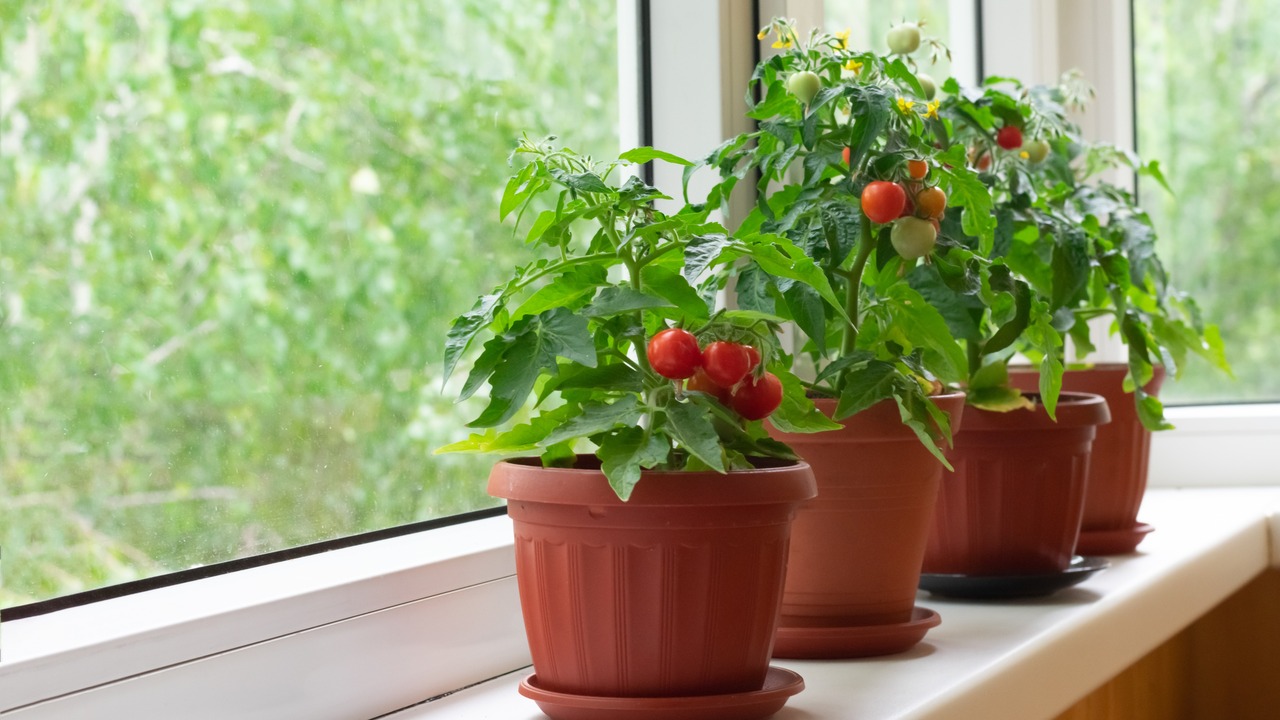
Image Credit: Shutterstock.
Hopefully, these tips will help you garner the biggest and best harvest of your tomato plants this year and years after. Enjoy your time planting this year and the growing process, and before you know it, those tomatoes will be ready for harvesting and finding their way to your plate.

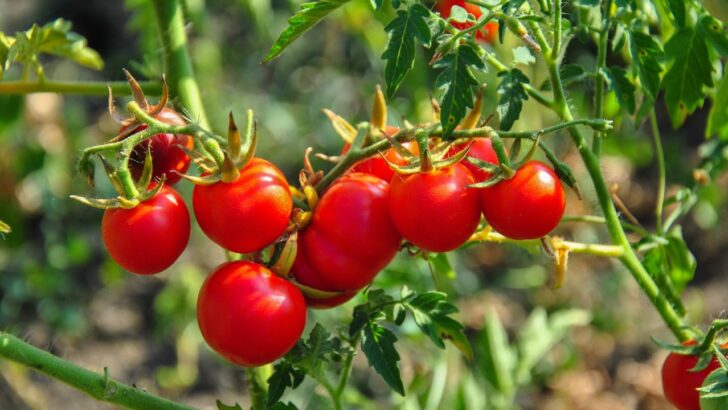

The Best Way To Stake Tomato Plants: 7 Practical Tips From Experienced Gardeners
Sunday 25th of June 2023
[…] Growing a successful tomato plant requires more than good soil and sunshine. You also need to ensure your plants are adequately staked, as it can help them grow healthier and taller while producing larger, tastier tomatoes. See how you can help your tomatoes grow faster. […]
What Is The Best Soil Mix For Tomatoes?
Tuesday 20th of June 2023
[…] Learn how to help tomato plants grow faster. […]
20 Best Cherry Tomatoes To Grow In Your Garden
Tuesday 20th of June 2023
[…] How To Make Tomato Plants Grow Faster […]